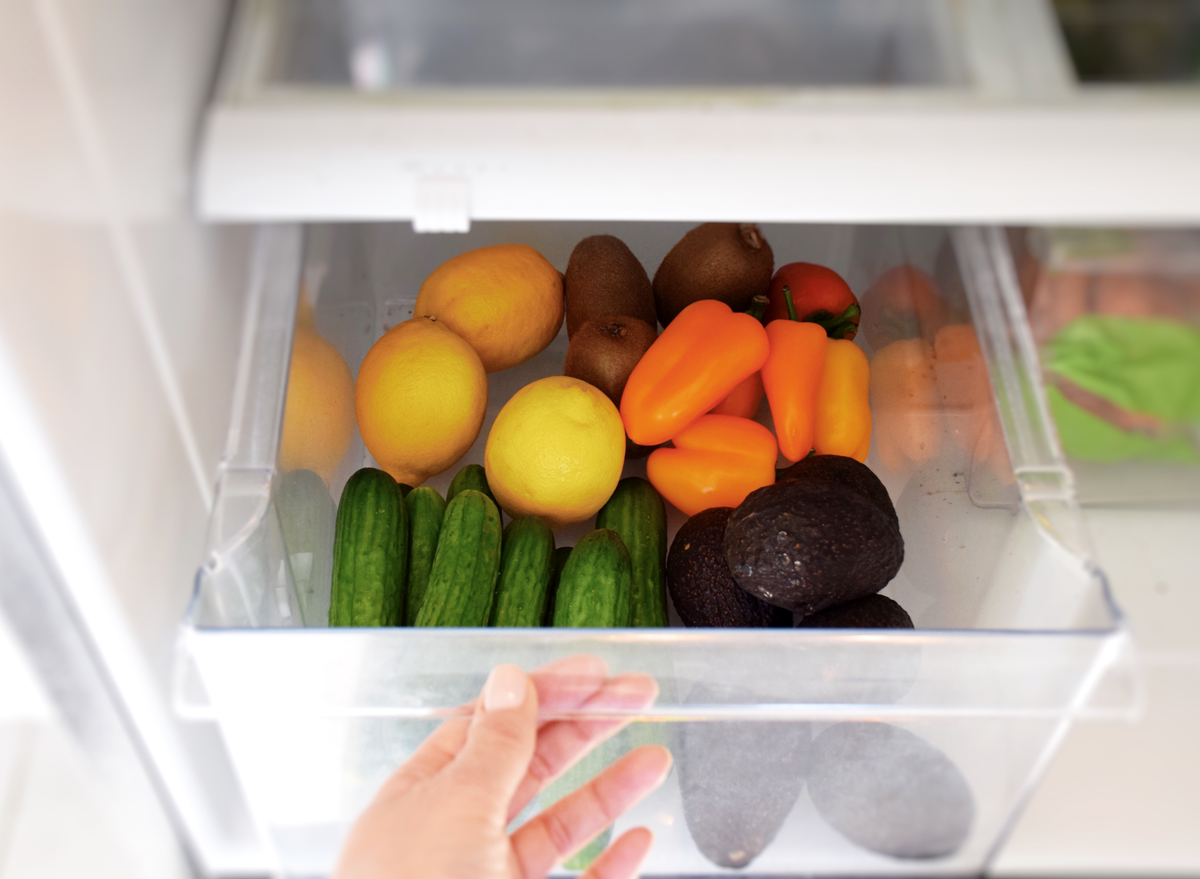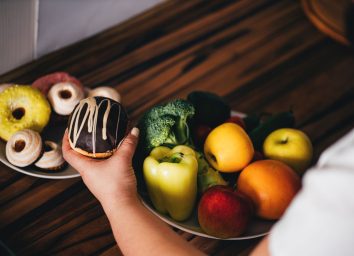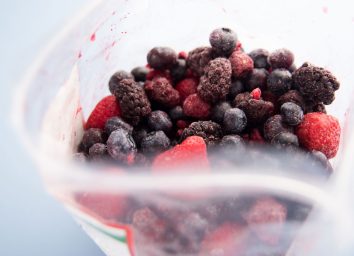This Is the ‘Bare Minimum’ Amount of Veggies You Need to Eat, Say Experts

Did you know that only 9% of adults eat the recommended amount of vegetables, according to the CDC? It goes without saying that this is a pretty upsetting statistic.
There are so many reasons why you should be eating vegetables—most of which you probably already know—but they’re worth repeating.
Why you should be eating vegetables and what happens if you don’t.
“Plants are an important part of our diet because they are rich in antioxidants which fight disease; fiber to help fill us up, manage hunger, decrease weight and help with regularity; vitamins for optimal health and immunity; and they are low in calories and full of water to keep us hydrated,” says Amy Shapiro, MS, RD, CDN, founder and director of Real Nutrition NYC, and member of our medical review board.
If you’re not eating enough vegetables, you not only will miss out on their benefits, but you may also encounter some serious negative side effects.
“When we don’t meet [vegetable] requirements we often fill up on more calorie-rich food that is less nutritious and can lead to increased hunger, cravings, weight gain and decrease our overall wellness, weaken our immune system, and throw off our digestive tracts,” says Shapiro. (Related: What Happens to Your Body When You Don’t Eat Fruits & Veggies.)
How many vegetables you need to eat per day (it’s not as much as you’d think).
With so few Americans incorporating beneficial levels of vegetables in their diets, you may assume that our vegetable deficiencies are due to the recommendations being unattainable; however, the good news is that the number of vegetables we should be eating isn’t as high as you’d think.
Women need to eat just 2.5 cups and men 3.5 cups of vegetables each day, according to the USDA Dietary Guidelines. Right now, the average American falls short—consuming only 1.4 cups of vegetables per day.
While that’s the bare minimum amount of vegetables to eat per day, Shapiro advises trying to get even more than that in for optimal health: “I recommend my clients fill half their plate with fruits and veggies at every meal and at two meals a day enjoy 2 cups of vegetables,” says Shapiro.
Read more: 9 Warning Signs You’re Not Eating Enough Vegetables
How to eat more vegetables.
Eating more veggies is easier said than done, right?
We know how important eating produce is to our health and wellness, but unfortunately, this knowledge isn’t enough for us to change our behavior.
Vegetables may be easy to come by if you factor in options like canned and frozen offerings, but there’s still a stigma attached to vegetables that prevents people from eating as much of them as they should.
As to why people don’t increase their produce intake, they often cite that fruits and vegetables go bad too quickly, they’re not available in their homes, they’re expensive, and they take too long to prep, according to a Clinical Medicine & Research study.
To help you overcome these hurdles, Shapiro shares some advice:
- Buy beyond fresh: Fresh vegetables aren’t the only way you can get your daily servings in: “Frozen, canned, and fresh veggies are all nutritious choices as long as there are no added sugars,” she says.
- Just blend it: “Smoothies and soups are a great way to get in fruits and vegetables. I always add spinach to my fruit smoothies, you don’t even know it’s in there!” says Shapiro.
- Look for veggies in unexpected places: “Fresh [produce] is now available at drug stores, coffee shops, and even corner delis,” says Shapiro.
- Serve them with a sauce or dressing: “Add a healthy salad dressing or dip your veggies into salsa, hummus, or guacamole,” she recommends.
- Get creative! “Vegetables can be cooked into multiple dishes like hamburgers, soups, sauces, etc. There are so many ways to enjoy fruits and veggies, get creative and challenge yourself to meet these portion goals most days of the week!” advises Shapiro.
It’s easy to break down your vegetable intake by meal: simply add a serving to every meal, and you’ll reach your daily recommendation in no time.
For more healthy eating news, make sure to sign up for our newsletter!








